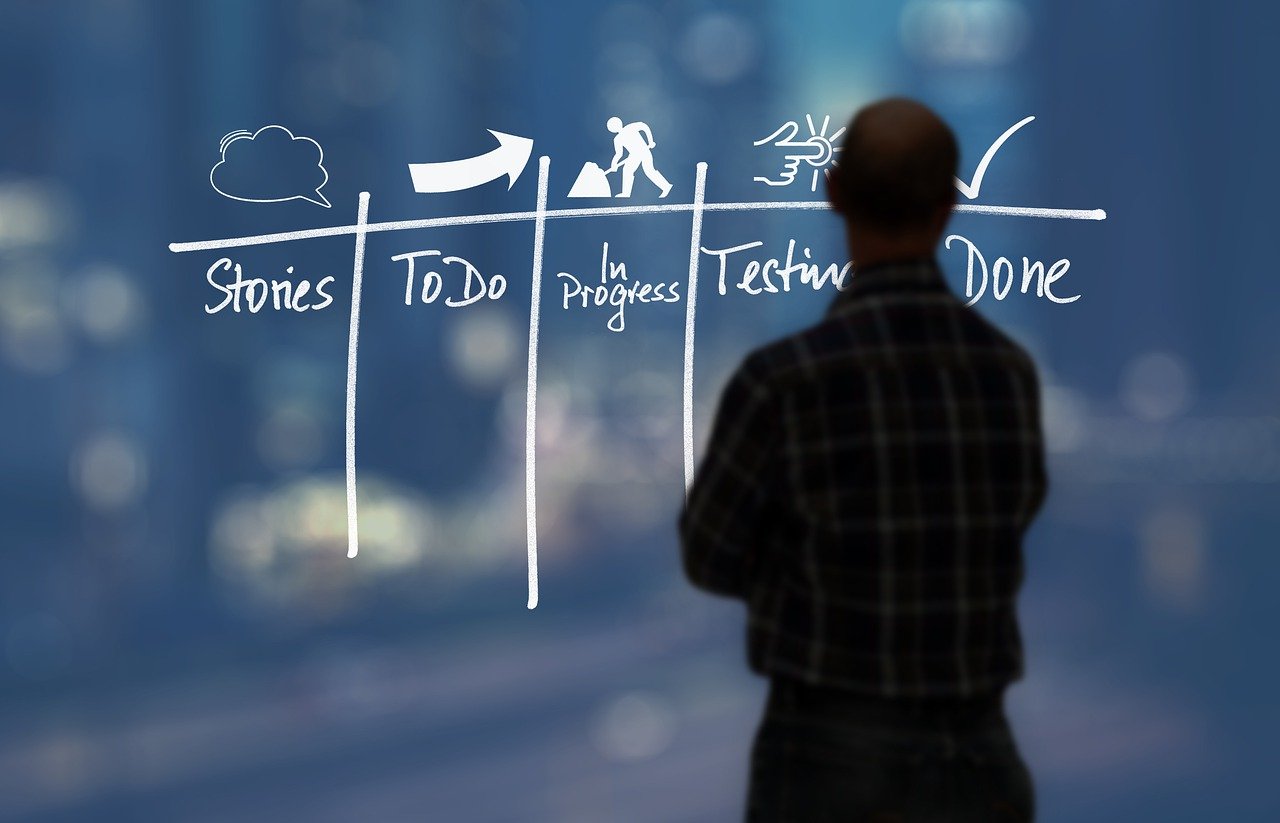In the realm of agile project management, Scrum and Kanban are two of the most popular methodologies that provide different ways of organizing work, managing tasks, and improving team efficiency. Each method has its unique features depending on the project type, team dynamics, and organizational goals. Lets discuss the main differences between the two well known agile methodology ones -Scrum and Kanban, analyses their pros and cons, and provide insights to enable teams to choose an agile framework that fits their specific requirements.
Understanding Scrum and Kanban
Scrum:
Scrum is an iterative/incremental Agile framework that stresses collaboration, accountability, and incremental progress. It is based on defined roles (Scrum Master, Product Owner, Development Team) ceremonies (Sprint Planning Daily Stand-ups Sprint Review Sprint Retrospective), and artifacts (Product Backlog Sprint Backlog Increment). Within these sprints known as time boxes that usually last 1-4 weeks long scrum teams strive to deliver a potentially shippable product increment.
Kanban:
On the other hand, we have Kanban – a visual management technique centered on continuous delivery and optimizing workflow. Kanban, derived from lean manufacturing principles, employs a board with columns representing different stages of work (e.g., To Do, In Progress, Done). Work items (tasks or user stories) are represented as cards that move across the board as they progress from one stage to the next. Kanban emphasizes flow efficiency, limiting work in progress (WIP), and continuous improvement without predefined iterations or roles.
Scrum Vs Kanban
Structure and Roles:
Scrum: It has defined roles such as Scrum Master, Product Owner, and Development Team which are similar to ceremonies like Sprint Planning and Daily Stand-ups for encouraging team collaboration.
Kanban: There is no prescription for specific roles or ceremonies. Instead, it is more concerned with visualizing work, restricting WIP, and continuously improving workflow.
Iterative vs Continuous Delivery:
Scrum: Works in time-boxed iterations called Sprints whose aim is to deliver potentially shippable product increment at the end of each sprint.
Kanban: Emphasis on continuous delivery where work items flow through the process stages as capacity allows without predefined iterations.
Planning and Flexibility:
Scrum: This requires prior planning during the Sprint Planning meetings; identifying Sprint goals and selecting work items from the Product Backlog
Kanban: This method allows you to adjust your work each time, basing it on capacity and demand with no fixed planning meetings.
Work Visualization & WIP Limits:
Scrum: It does not however put explicit limits on the number of items in progress at any given time but uses artifacts like the Sprint Backlog and Burndown Charts to visualize progress within a sprint.
Kanban: Work is visualized on Kanban boards, while WIP limits are actively managed to optimize flow and reduce cycle times.
Change Management:
Scrum: Scope changes within Sprints are managed using formal change control processes such as Sprint Review and Sprint Backlog refinement.
Kanban: New work items can be added to the Kanban board whenever they are ready for implementation; this allows for more flexible handling of changes.
Advantages of Scrum
Predictability: This makes it predictable by providing a structure with defined roles and ceremonies that lead to expectations about sprint outcomes and timelines.
Team Collaboration: Daily stand-ups along with other events during sprints encourage collaboration among team members
Iterative Improvement: Helps teams continuously improve through iterative improvement fostered by sprint retrospectives, which allow them to adapt their processes according to feedback over time.
Advantages of Kanban
Flexibility: Offers flexibility in managing work priorities and adapting to changing requirements without fixed iterations.
Continuous Flow: Promotes continuous delivery and faster cycle times by optimizing workflow and managing WIP limits.
Visual Management: Provides clear visibility into work progress and bottlenecks through the Kanban board, fostering transparency and accountability.
Choosing the Right Agile Framework for Your Team
To determine whether Scrum or Kanban is more suitable for your team, consider the following factors:
- Project Type: Scrum is well-suited for projects with defined goals and deliverables that benefit from structured iterations. Kanban is ideal for continuous improvement projects or environments where priorities frequently change.
- Team Dynamics: Assess your team’s preferences for structure and autonomy. Teams that thrive on structured roles and ceremonies may prefer Scrum, while teams valuing flexibility and continuous flow may lean towards Kanban.
- Organizational Culture: Consider your organization’s culture and readiness for agile practices. Scrum’s structured approach may align better with organizations transitioning from traditional project management, whereas Kanban’s adaptability may suit organizations embracing lean principles.
- Project Requirements: Evaluate your project’s requirements for predictability, delivery speed, and scope flexibility. Scrum provides clearer predictability and scope management within fixed iterations, whereas Kanban offers flexibility in managing changing priorities and continuous delivery.
Implementing Scrum or Kanban Effectively
Regardless of which agile framework you choose, successful implementation requires:
- Clear Goals and Expectations: Define project goals, roles, and expectations clearly to align the team’s efforts.
- Training and Support: Provide training and coaching to ensure team members understand and embrace agile principles and practices.
- Iterative Improvement: Continuously evaluate and improve your agile processes based on feedback and retrospectives to enhance team performance and delivery outcomes
Conclusion
The decision between Scrum and Kanban will depend on your team’s preferences, the type of project you handle as well as the organizational context. Despite offering structured plans Sprints (fixed Sprints) which provide predictability, and iterative improvement among other project requirements; Scrum does not accommodate changes since it has fixed iterations. On the other hand, Continuous Flow is one of the key features associated with Kanban. By understanding these subtleties when matching each with your teams’ requirements for agility in terms of productivity or collaborative projects success can be achieved easily. Whether you decide on the structured approach of Scrum or the flexible nature of Kanban, both approaches offer powerful tools to boost team efficiency and deliver value to stakeholders in today’s dynamic business environment.
Views: 0




Leave a Reply